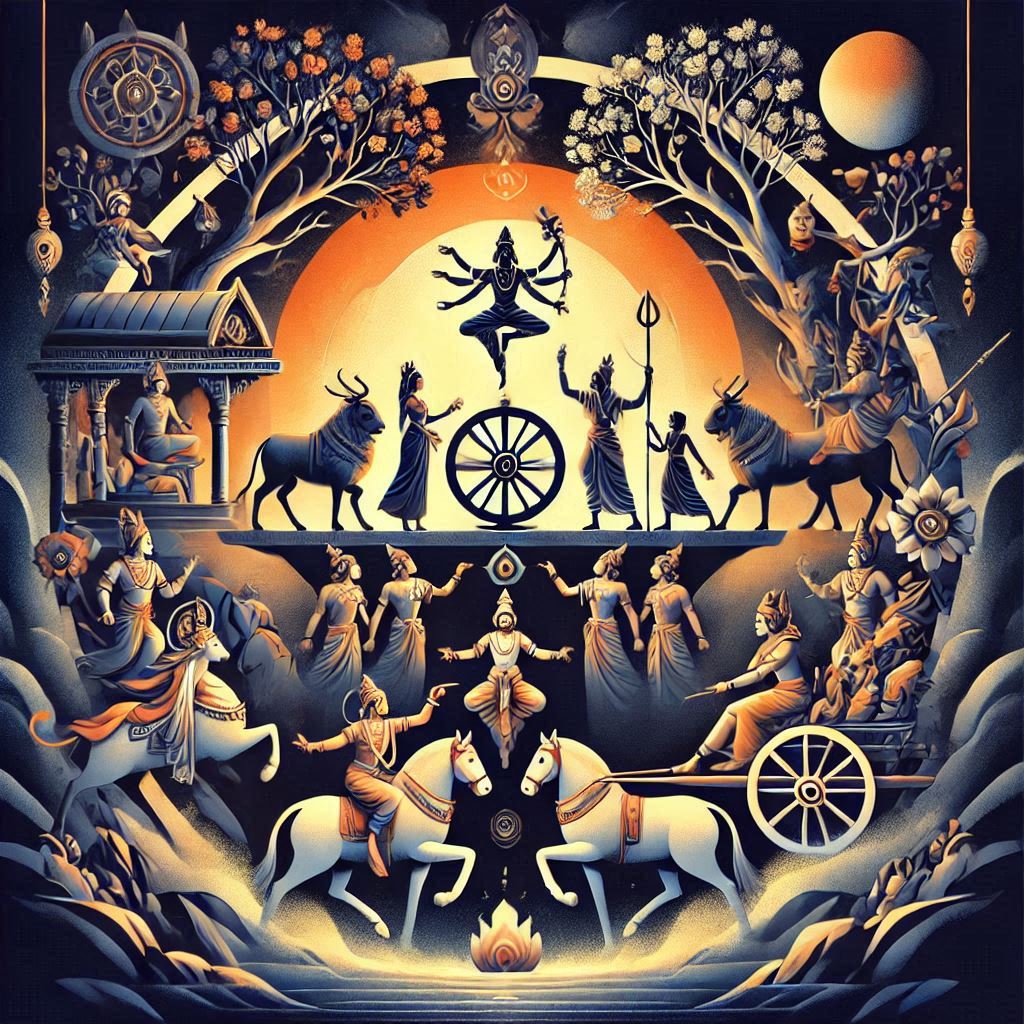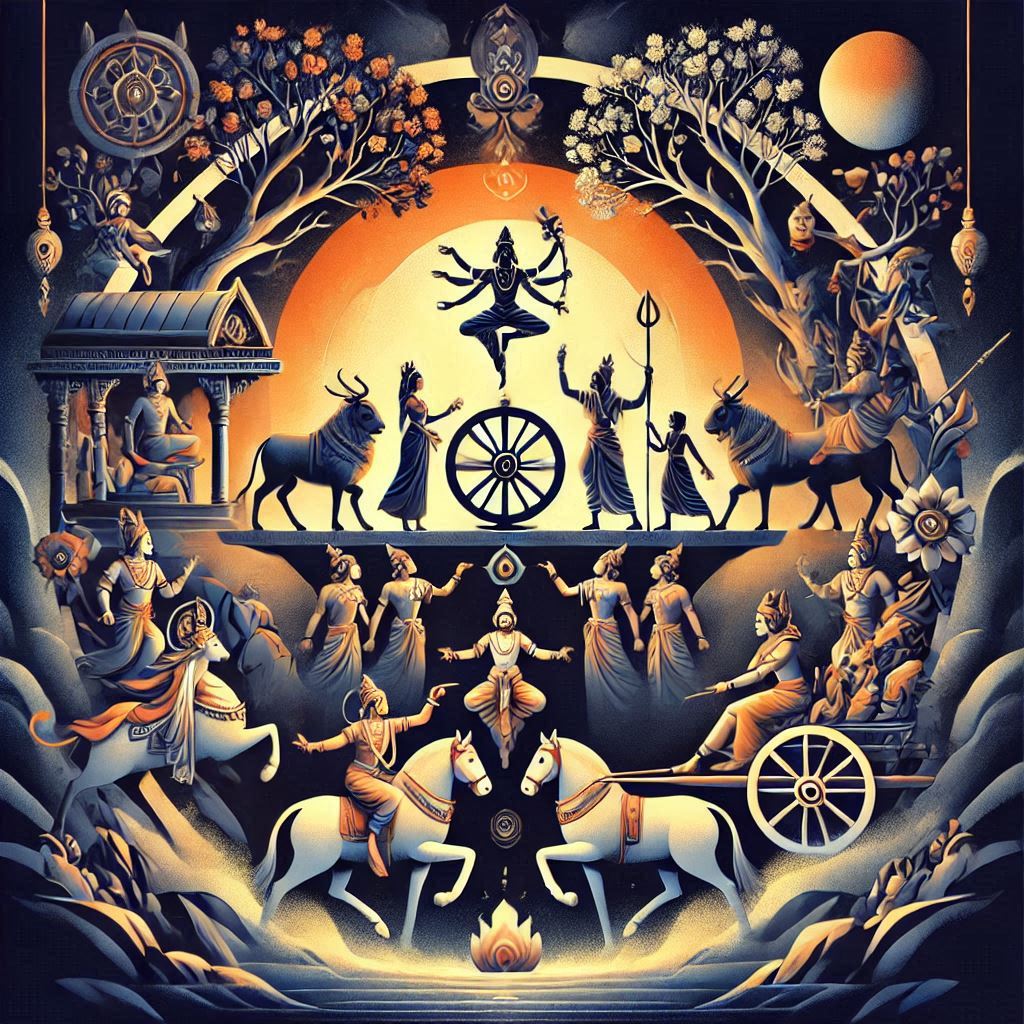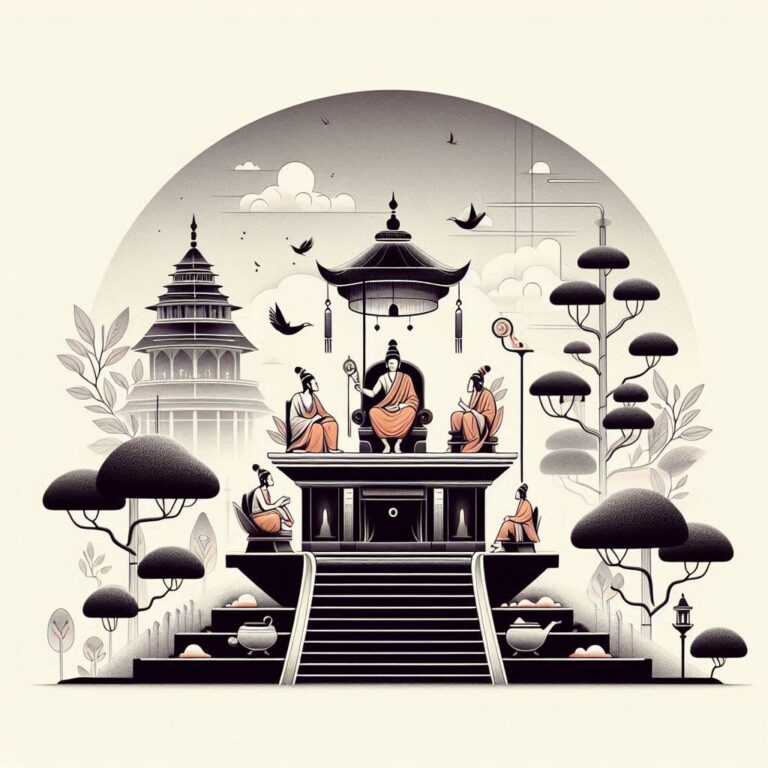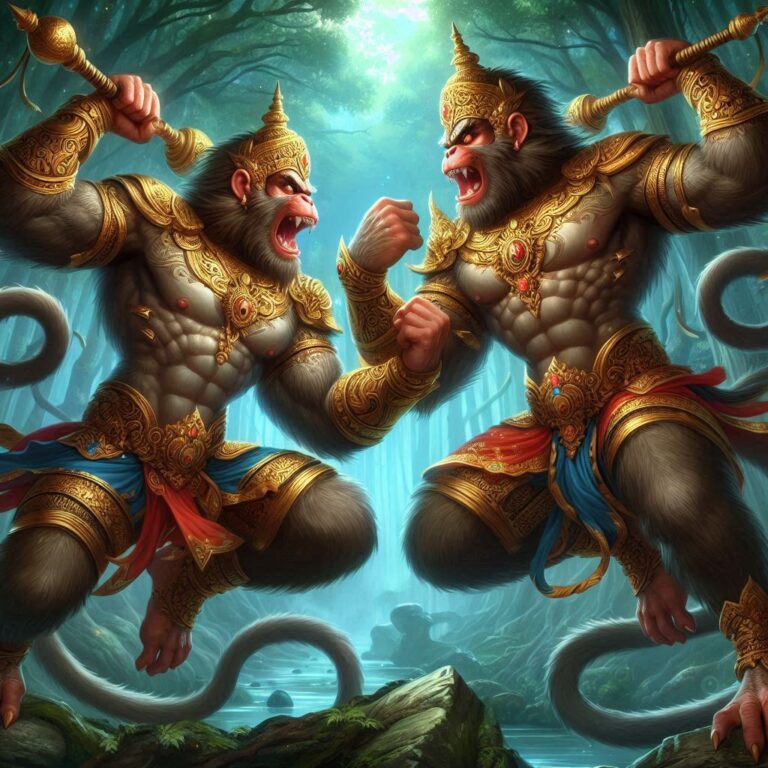Exploring Sacrifice: Insights from the Epic Ramayana’s Philosophy
The Essence of Sacrifice in the Ramayana
When we think of the ancient epics, the Ramayana stands out not just for its thrilling narratives but for its profound philosophies. One of the themes that resonate deeply within its verses is the concept of sacrifice. So, let’s take a leisurely stroll through this timeless text and explore why sacrifice is not merely an act but a philosophy that encapsulates survival, virtue, and love.
What Does Sacrifice Mean?
When we say “sacrifice,” it often conjures images of giving something valuable for a greater cause. But what if I told you that in the context of the Ramayana, sacrifice is not just a gesture? It’s an intrinsic part of a person’s character, woven into the very fabric of existence. In this epic, characters embody the essence of sacrifice, revealing how it acts as a bridge between the self and a higher purpose.
The Importance of Sacrifice in the Ramayana
One could argue that sacrifice is the heartbeat of the Ramayana. But why is it so crucial? Let’s consider a few perspectives:
- Moral Duty: The characters in the Ramayana serve not just their personal interests but the greater good of society. Their sacrifices often lead to greater harmony and peace.
- Love and Relationships: Sacrifice is portrayed as a testimony of love—between family members, friends, and even communities. A character’s willingness to endure hardship for others sheds light on the strength of their commitments.
- Internal Growth: Through sacrifice, characters often undergo significant transformations, showing us that personal growth often comes at a cost.
Key Characters and Their Sacrifices
Let’s dive deeper into some iconic characters in the Ramayana whose sacrifices shaped the epic’s narrative.
1. Lord Rama: The Ideal Man
Perhaps the most poignant example of sacrifice in the Ramayana is Lord Rama. Didn’t he give up his rightful throne to honor his father’s word and uphold dharma (righteousness)?
A Shloka to Reflect Upon:
प्रजापतिसंवृष्टां सदा धर्मं च मां भज।
Prajāpatisaṁvṛṣṭāṁ sadā dharmaṁ ca māṁ bhaja.
(Worship me, ever devoted to dharma, blessed by the lord of creation.)
Rama’s commitment to duty over personal ambition serves as an eternal lesson for us all. It makes one wonder, how often do we prioritize our desires over our responsibilities?
2. Sita: The Epitome of Strength
Sita, Rama’s wife, is another emblem of sacrifice. Abducted by Ravana, her unwavering devotion leads her to endure immense suffering.
A Doha for Sita:
सूर्य-सीता दयारूपी, दया की सूरत।
सुर्य पिता आराधना, बिनु रघु-रीता।
Sūrya-sītā dayārūpī, dayā kī sūrat.
Surya pitā ārādhānā, binu raghu-rītā.
(Sita, a form of compassion, shines bright like the sun; without the lineage of Raghus, she remains devoted.)
Her willingness to step into the fire, following her husband’s trial, portrays the epitome of sacrifice in love and loyalty. Wouldn’t you agree that her actions exemplify a magnitude of love that goes beyond mere words?
3. Lakshmana: The Loyal Brother
Lakshmana’s decision to accompany Rama into exile is arguably one of the most touching stories. He sacrificed his comforts to stand by his brother’s side.
A Shloka on Brotherly Love:
सुग्रीवस्त्वं च राघवम्।
सखा जिवायति राघवम्॥
Sugrīvastvaṁ ca Rāghavam.
Sakhā jivāyati Rāghavam.
(Sugariva, the eternally devoted friend, forever thrives through Raghava’s presence.)
His actions remind us that real heroism isn’t found in glorious battles but in support and loyalty to loved ones. Isn’t it heartwarming when a sibling stands by during tough times?
The Philosophical Underpinning of Sacrifice
You might be thinking, “Okay, I get it — sacrifice is important. But what’s the bigger picture?” Here’s where it gets interesting!
1. The Interconnectedness of Life
Sacrifice teaches us about the connections we share with each other. By giving something up, we actually gain something more profound: a sense of belonging and shared purpose.
2. The Cycle of Life
The philosophy of sacrifice in the Ramayana echoes the idea of a cyclical universe. Every action has a consequence, and many of the characters acknowledge their sacrifices as part of a greater cosmic balance.
3. Understanding Dharma
Dharma isn’t just about following rules; it’s about understanding one’s role in the vast tapestry of life. The sacrifices made by Rama, Sita, and Lakshmana illustrate that sometimes personal sacrifices serve a larger moral duty.
The Cultural Impact of Sacrifice in the Ramayana
It’s impossible to overstate the impact that the theme of sacrifice has on Indian culture. It’s embedded in rituals, festivals, and even daily conversations. Isn’t it fascinating how a story can shape entire societal values?
Festivals Inspired by Sacrifice
For instance, during Dussehra, we celebrate the victory of good over evil, which inherently involves sacrifices made by Lord Rama and his allies. This festival reminds us continually of what it means to stand for what is right, even at a personal cost.
Moral Lessons for Today
The concept of sacrifice transcends time and context. It is just as relevant today as it was centuries ago. Whether it’s a parent working two jobs for the family’s betterment or a friend making time in their busy schedule to be there for you, individual sacrifices resonate all around us.
Conclusion
In concluding this journey through the Ramayana’s philosophy of sacrifice, we must remember that sacrifice is not merely about martyrdom or loss. It’s about love, duty, and understanding the cycle of life. The key takeaway? Life offers us numerous opportunities to grow, love, and contribute to a larger community through acts of sacrifice, just like the characters in the Ramayana. Adopting this outlook can make us not only better individuals but also more compassionate members of society.
FAQs
-
What is the significance of sacrifice in the Ramayana?
Sacrifice in the Ramayana symbolizes dedication to duty, love, and the greater good, shaping the moral fabric of society. -
How does Lord Rama exemplify sacrifice?
Lord Rama gave up his rightful throne to fulfill his father’s promise, emphasizing duty over personal ambition. -
What does Sita’s sacrifice represent?
Sita’s sacrifices reflect her unwavering loyalty and strength in enduring hardship for love.
-
What moral lessons can be learned from Lakshmana’s actions?
Lakshmana’s loyalty teaches us about the importance of standing by loved ones during difficult times. -
How is the theme of sacrifice relevant today?
The theme of sacrifice encourages us to put the needs of others above our own and to embrace our roles within our families and communities.








